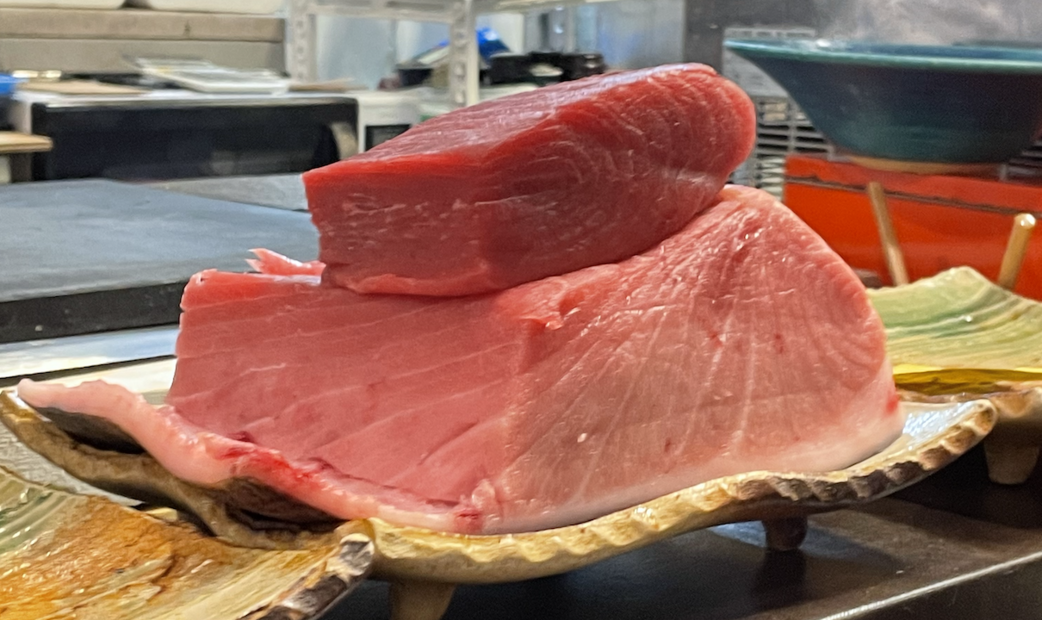
What is Maguro (Tuna)? (Types of Sushi Toppings, Seasonal Varieties, and How to Eat It) and Sushi Restaurants in Tokyo That Specialize in Tuna
The OMAKASE editorial team, an official partner of Michelin, will introduce tuna and some of the best sushi restaurants in Tokyo where you can enjoy tuna delicacy.
What is Maguro?
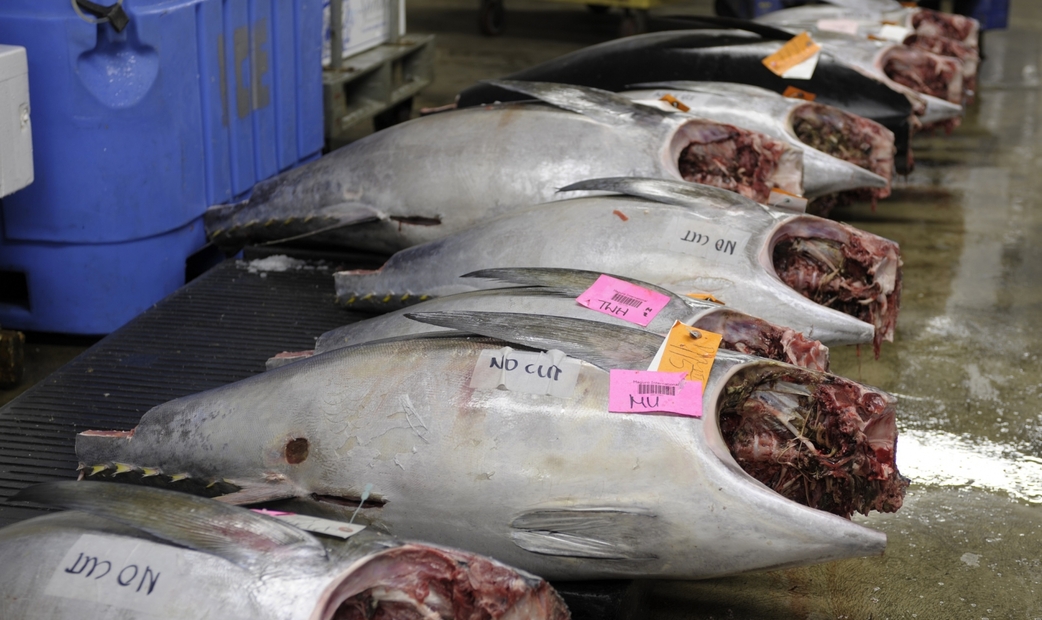
Maguro (Tuna)
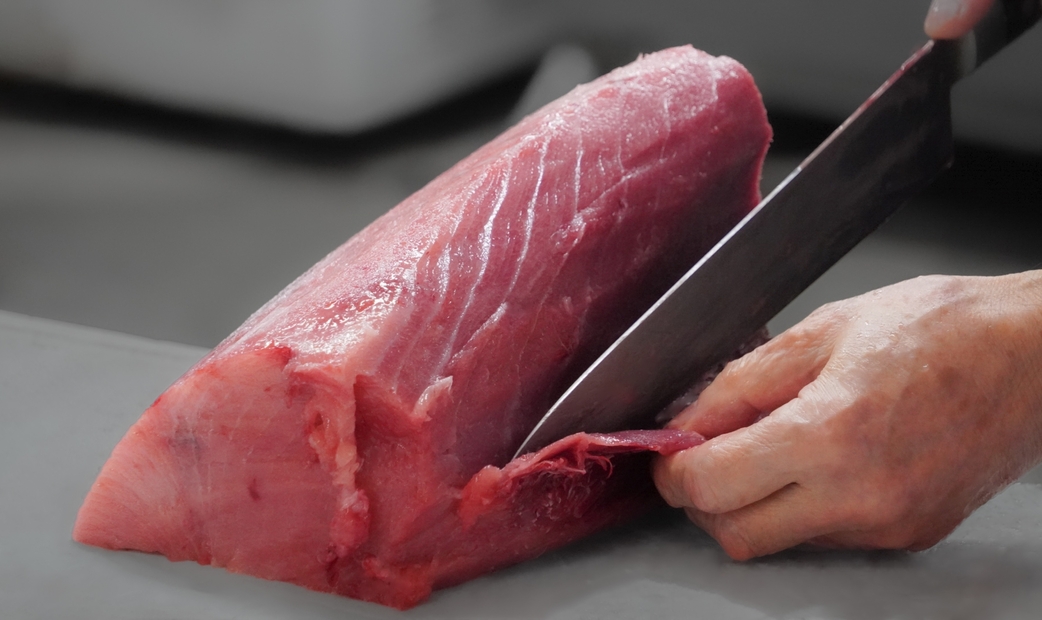
Tuna is a large migratory fish found in warm waters around the world and is a highly valued ingredient in many countries, especially Japan. In Japan, tuna is deeply rooted in the food culture and is used in various dishes such as sushi, sashimi, grilled dishes, and stews.
There are primarily 7 types of tuna known
Bluefin Tuna (Hon Maguro)
Used in top-tier sushi restaurants.
Atlantic Bluefin Tuna
Sometimes considered equivalent to Hon Maguro and is a premium variety.
Southern Bluefin Tuna (Indian Tuna)
A high-grade tuna, occasionally seen at conveyor belt sushi or local sushi restaurants.
Bigeye Tuna (Mebachi Maguro)
Commonly used in packaged sushi and frequently consumed.
Albacore Tuna (Binnaga)
Often used for processing but also served as "bintoro" at conveyor belt sushi.
Yellowfin Tuna (Kihada)
Commonly used in packaged sushi and frequently consumed, often processed.
Longtail Tuna (Koshinaga)
Primarily used for processing.
Among these, Bluefin Tuna is the most high-end, with some individuals weighing over 700 kg. Due to its rarity and exceptional flavor, it is often referred to as the "Black Diamond" and commands high prices in the market.
Tuna's Season
The best season for tuna varies depending on the type and production area, but generally, Oma bluefin tuna is said to be the most fatty and delicious from December to January. Bluefin tuna during this season is characterized by its rich flavor and melt-in-your-mouth texture. On the other hand, tuna caught in summer has less fat and a refreshing taste.
Famous Tuna Producing Regions in Japan
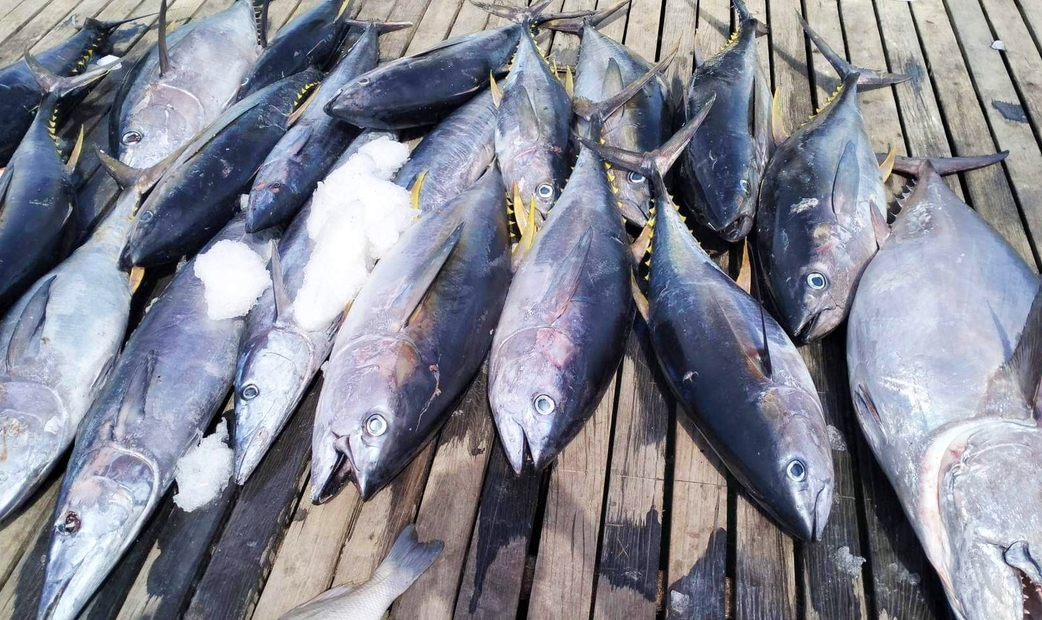
Among the particularly famous tuna production areas in Japan, Oma in Aomori Prefecture is one of the most well-known places. The sea around Oma is rich in plankton and attracts many small fish and squid, so the tuna that grow there are fatty. The bluefin tuna caught by single-hook fishing in Oma can sometimes trade at high prices of hundreds of millions of yen.
Other tuna production areas include the Goto Islands in Nagasaki Prefecture, Makurazaki in Kagoshima Prefecture, and Yaizu in Shizuoka Prefecture, where tuna with unique characteristics are landed.
Tuna Wholesalers
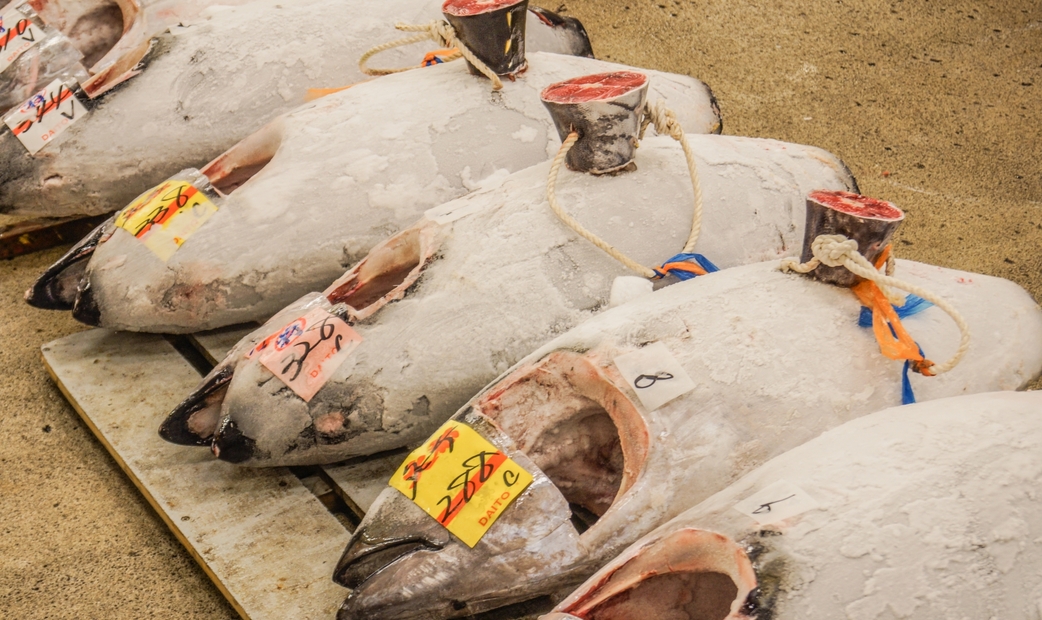
A "nakaoroshi" refers to professionals who source fish from fishing ports and markets and delivers it to sushi restaurants and restaurants in the best possible condition. Tuna wholesalers, in particular, are essential to sushi chefs, as they evaluate the quality of tuna by region and individual fish, and apply the best aging techniques.
The four major tuna wholesalers in Japan are "Yamayuki," "Fujita," "Ishiji," and "Hichou."
When visiting high-end sushi restaurants on a trip to Japan, you will often have the opportunity to go to restaurants that use tuna purchased from the top-class "Yamayuki" in particular.
Places to Enjoy Sushi in Japan
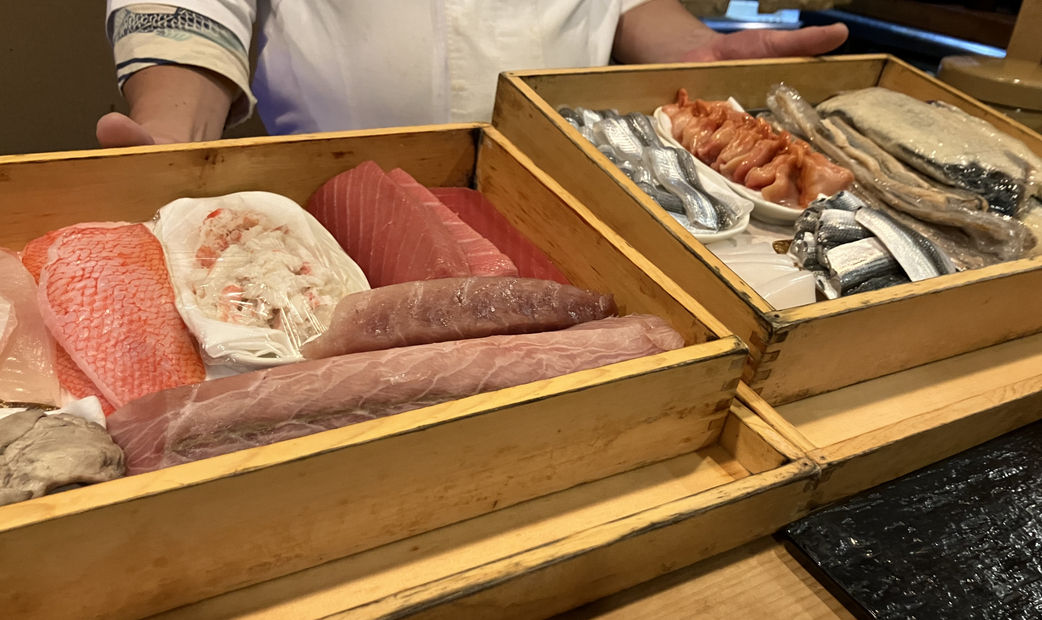
In Japan, tuna is a very familiar fish and is enjoyed daily as sushi and sashimi. It is served in various types of sushi restaurants, including conveyor belt sushi restaurants, local sushi restaurants, and high-end Edomae-sushi restaurants. It can also be easily purchased at supermarkets and is widely used as a home-cooked meal.
How to eat tuna in Japan other than sushi
Tuna is known as a fish with very few waste parts, as almost every part of the fish, except for the bones and skin, is edible. For example, the eyes are often simmered to enjoy their gelatinous texture, while the internal organs are considered a delicacy and referred to as "tuna innards." Additionally, the meat of the tuna is sometimes heated and preserved in oil to create "canned tuna" (sea chicken), which is widely used as a filling for onigiri (rice balls) and in tuna mayonnaise dishes.
Types of Tuna Toppings for Sushi
What is Toro?
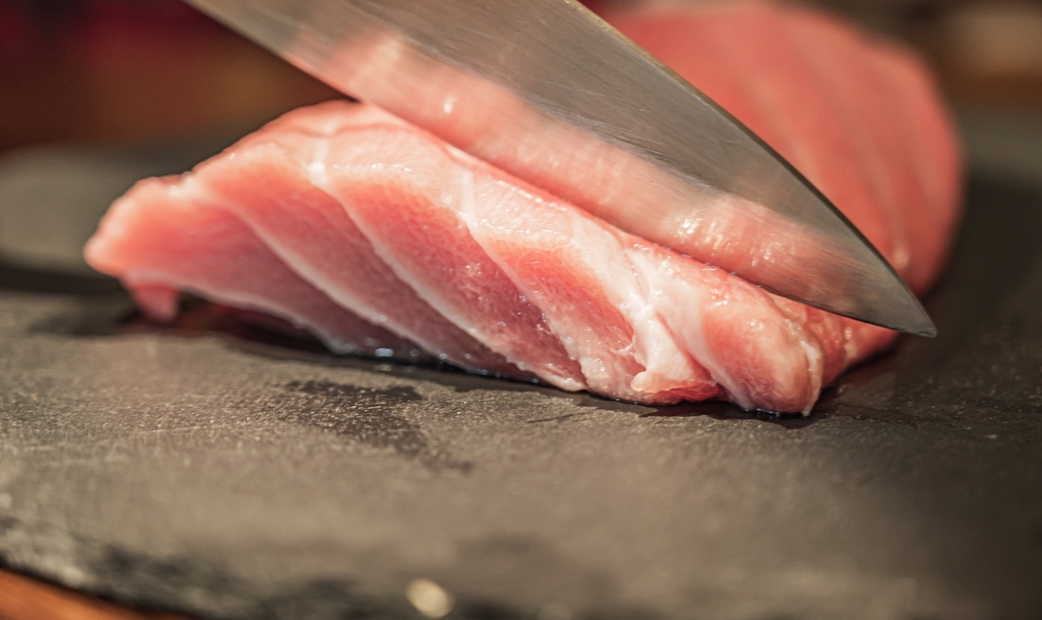
Toro refers to the fatty parts of tuna, primarily from the belly area. It makes up only about 20% of the tuna's body, making it rarer and more valuable than lean tuna (akami). During the Edo period, toro was avoided because it spoiled quickly, and people preferred lean tuna. However, with advancements in refrigeration, toro has become a premium sushi topping and a staple in high-end sushi today.
The characteristics of Toro
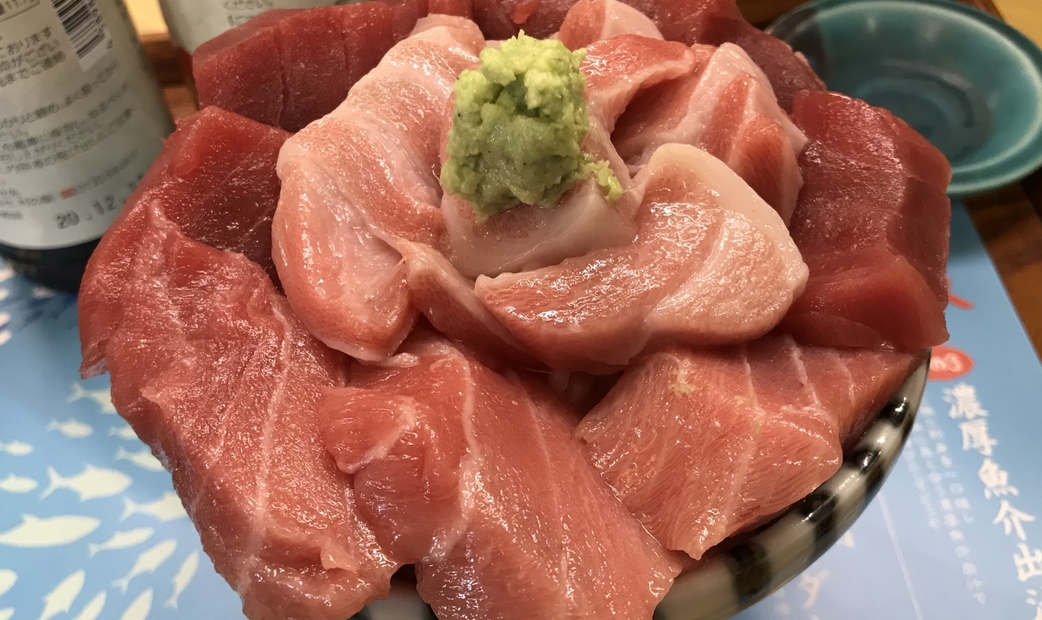
- A melt-in-your-mouth texture the moment you put it in your mouth
- High in fat and rich in sweetness
- Contains little bloodline, giving it a clean, pink color.
How to Enjoy Toro Sushi
- Nigiri (This is the best way to enjoy the pure flavor of toro)
- Aburi Toro (Slightly searing the surface adds a delicious smokiness)
- Shio Toro (Instead of soy sauce, try it with salt and sudachi for a unique flavor)
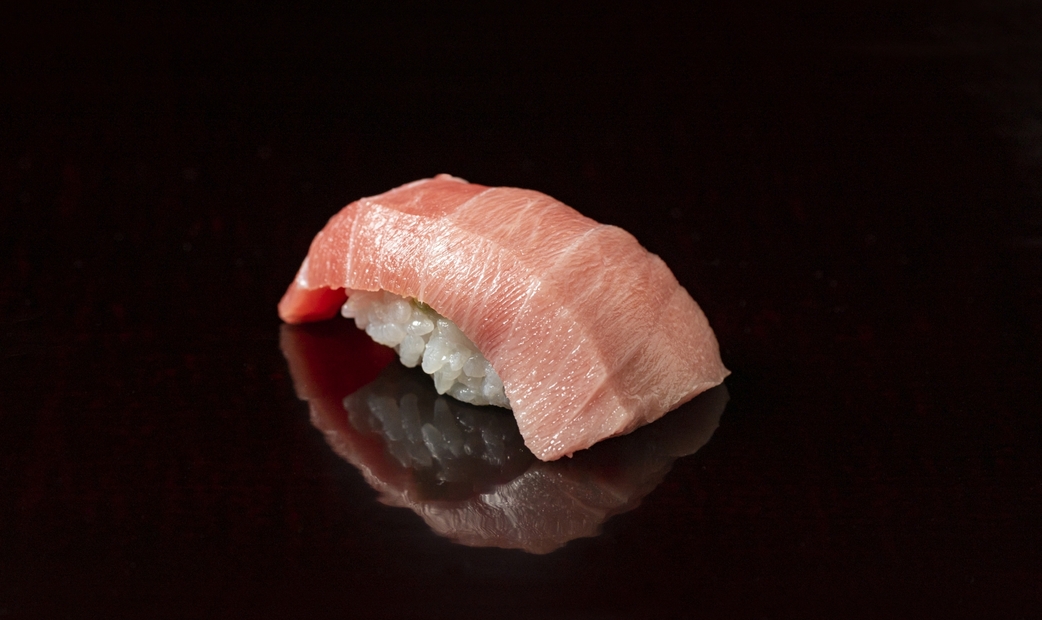
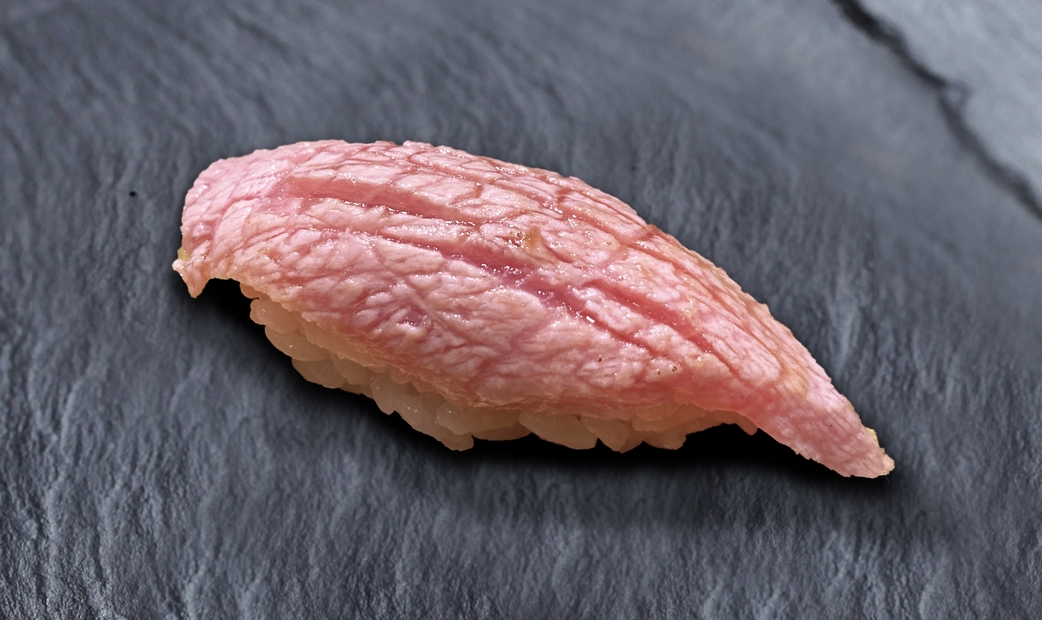
What is Otoro ?
Otoro is the fattiest part of the tuna belly and is considered the most premium cut. It can only be obtained from bluefin tuna and southern bluefin tuna, and only a small amount is available from each fish, making it extremely rare.
The characteristics of Otoro
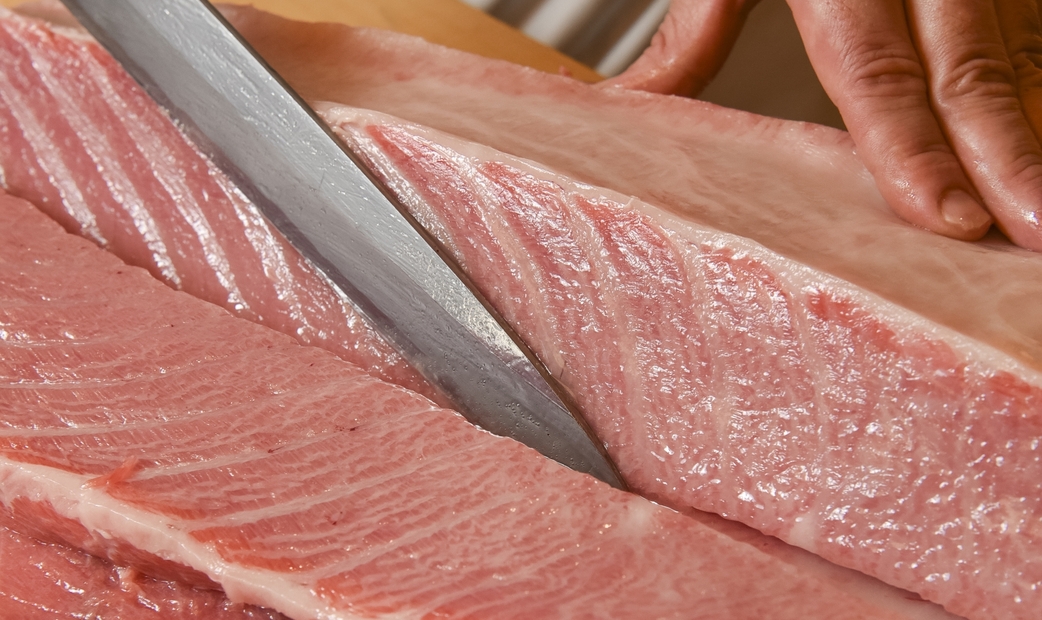
- Very high fat content and the richest flavor
- Marbled appearance with white and pink stripes
- Melts instantly in your mouth
How to Enjoy Otoro Sushi
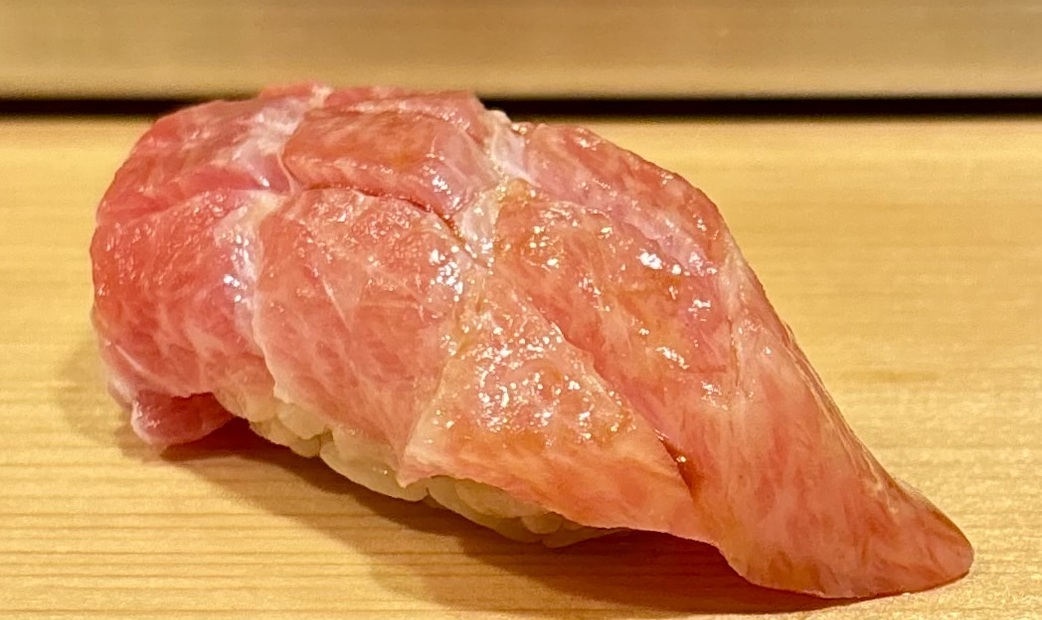
- Nigiri as it is (you can directly enjoy the sweetness of the fat)
- Seared Otoro (removes excess fat and adds a savory aroma)
What is Chutoro ?
Chutoro is a cut that falls between akami and otoro, offering a good balance of fat and lean meat. It is not as fatty as otoro, but has more fat than akami, making it a favorite among tuna lovers.
The characteristics of Chutoro
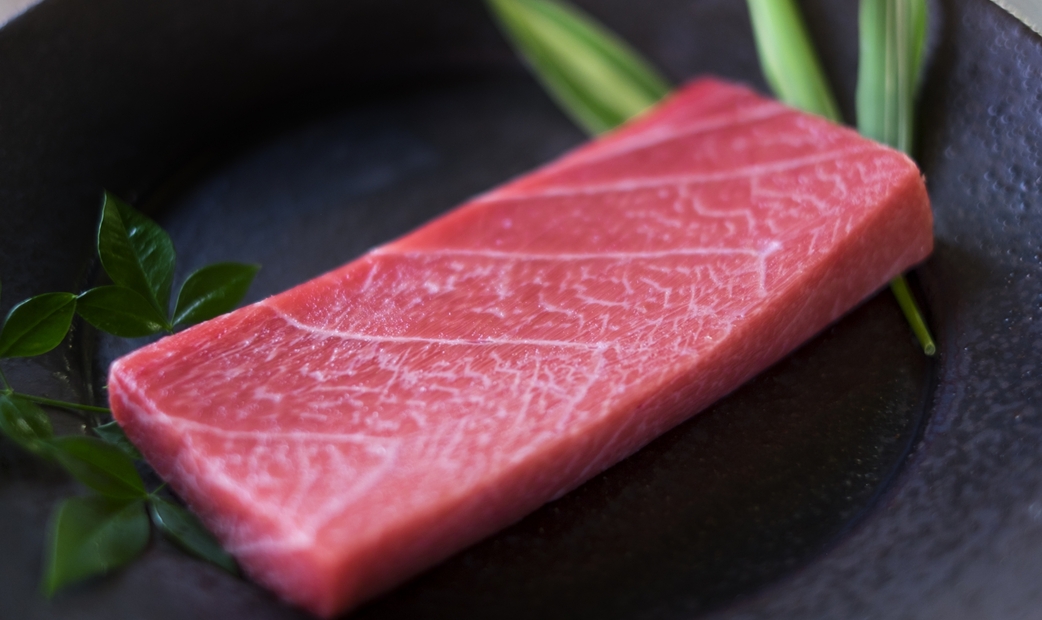
- Enjoy both the umami of the lean meat and the sweet richness of the fatty toro.
- Has a moderate amount of fat, making it easy to eat.
- Lighter than otoro but richer than akami.
How to Enjoy Chutoro Sushi
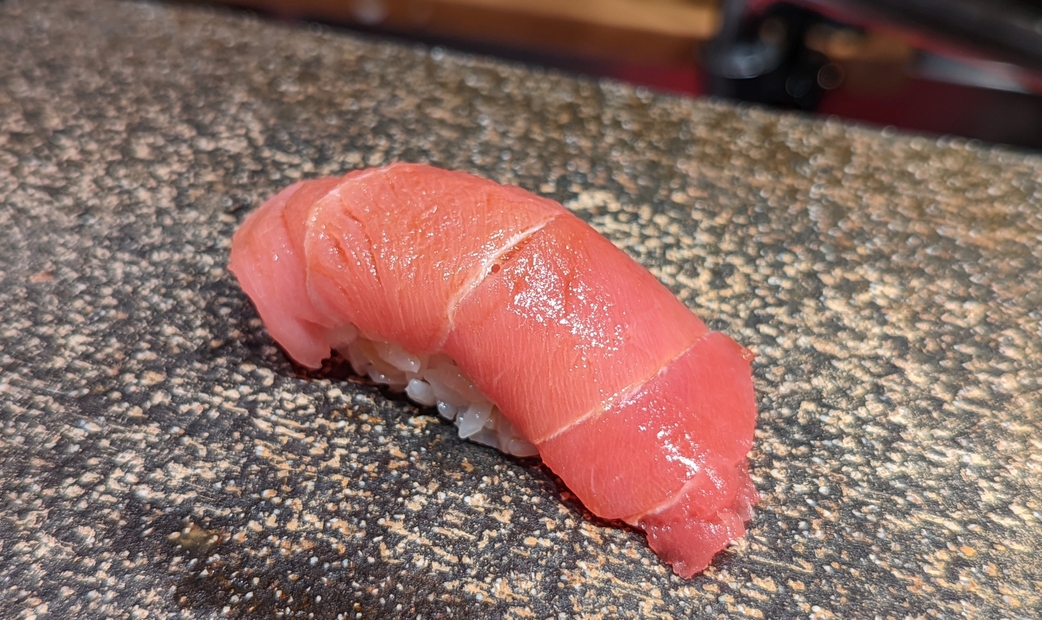
- Nigiri as it is (enjoy the well-balanced flavor)
- Zuke Chutoro (increased richness by marinating in soy sauce)
- Seared Chutoro (enhances savoriness by searing)
What is Akami ?
Akami refers to the lean parts of tuna, found on the back and belly, with low fat content. It makes up about 80% of the tuna's body and is the most commonly consumed part. During the Edo period, when people referred to tuna in Edomae-sushi, they meant akami. Because it has less fat and is easier to preserve, it was often marinated in soy sauce and served as "zuke maguro" (marinated tuna).
The characteristics of Akami
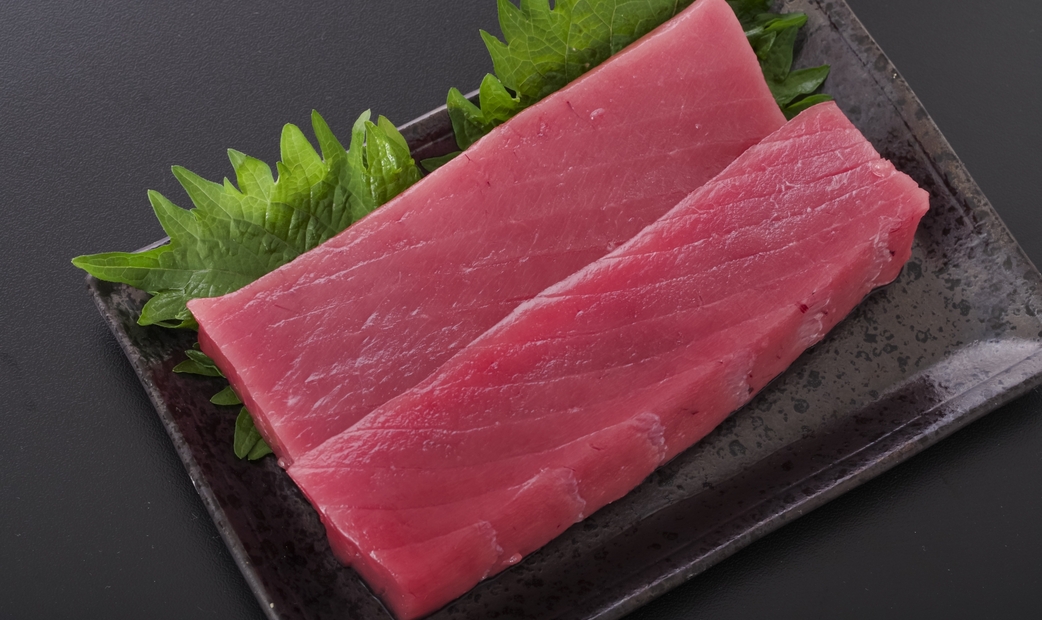
- Low fat and refreshing taste
- Rich in iron and has a unique umami flavor
- Deep red color unique to red meat (due to high blood content)
How to Enjoy Akami Sushi
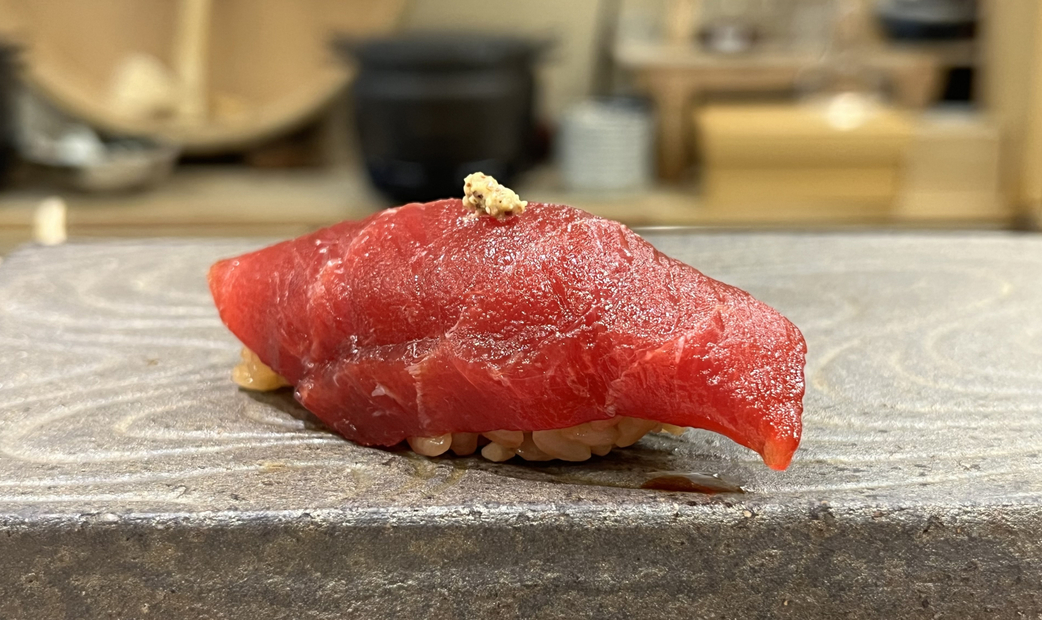
- Nigiri as it is (to enjoy the simple flavor)
- Zuke (marinated in a soy sauce-based sauce to bring out the umami)
- Hosomaki (red meat rolled into sushi and combined with soy sauce) called Tekkamaki
What is Negitoro ?
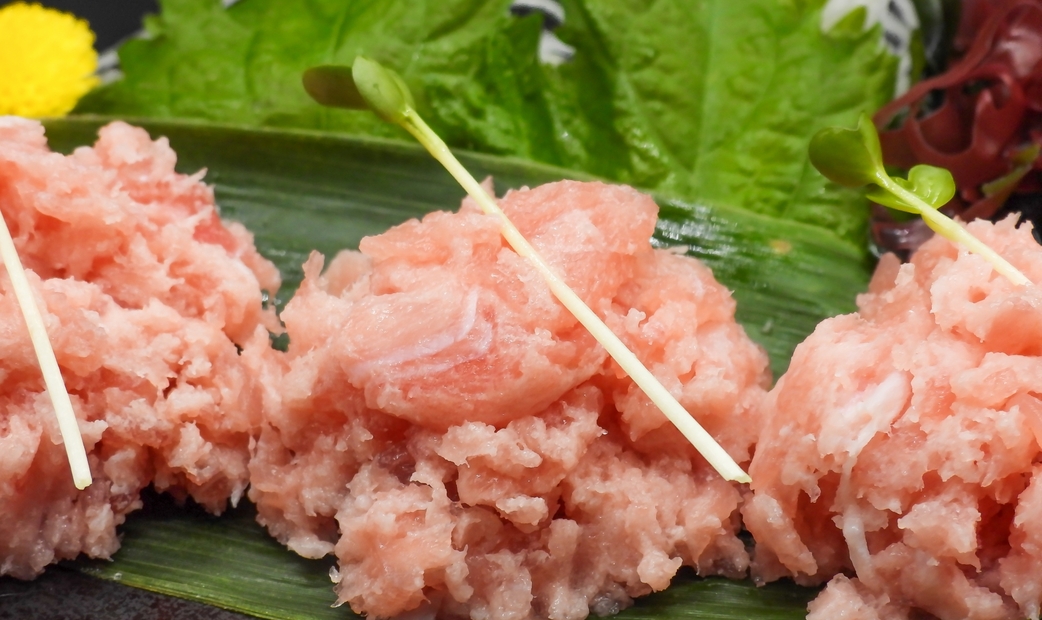
Negitoro refers to finely chopped tuna meat that is attached to bones and tendons when the tuna is filleted. Sometimes, fish paste made from entirely different types of fish, such as akamanbo (moonfish), is sold as negitoro. Today, it is widely enjoyed as a popular sushi topping.
The characteristics of Negitoro
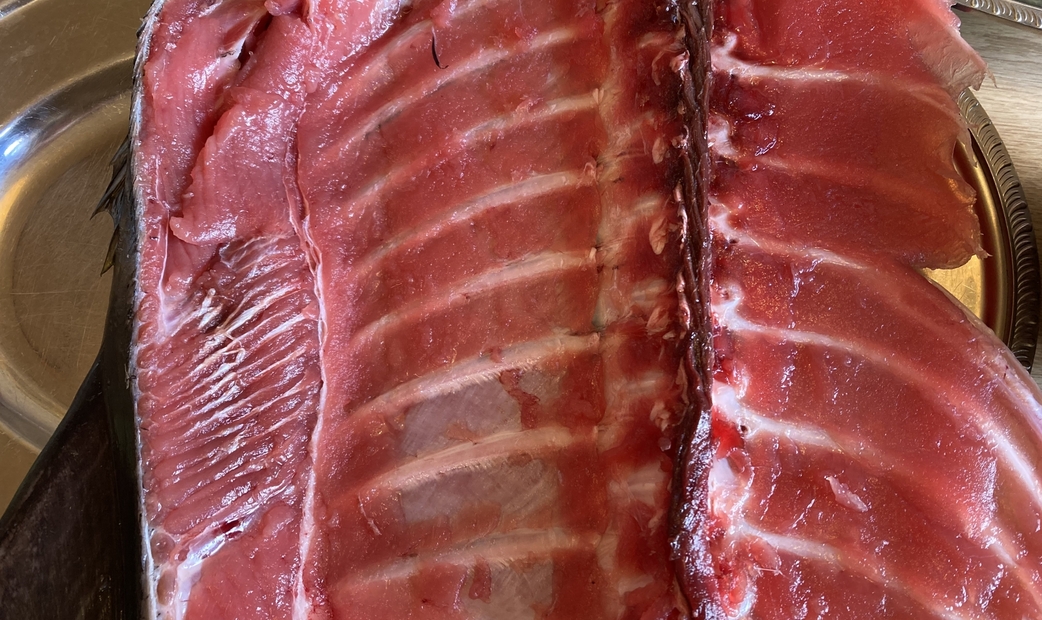
- Moderately mixed with fat and a smooth texture.
- Rich umami and a pleasant taste.
- The flavor is enhanced when eaten with green onions.
How to Enjoy Negitoro Sushi
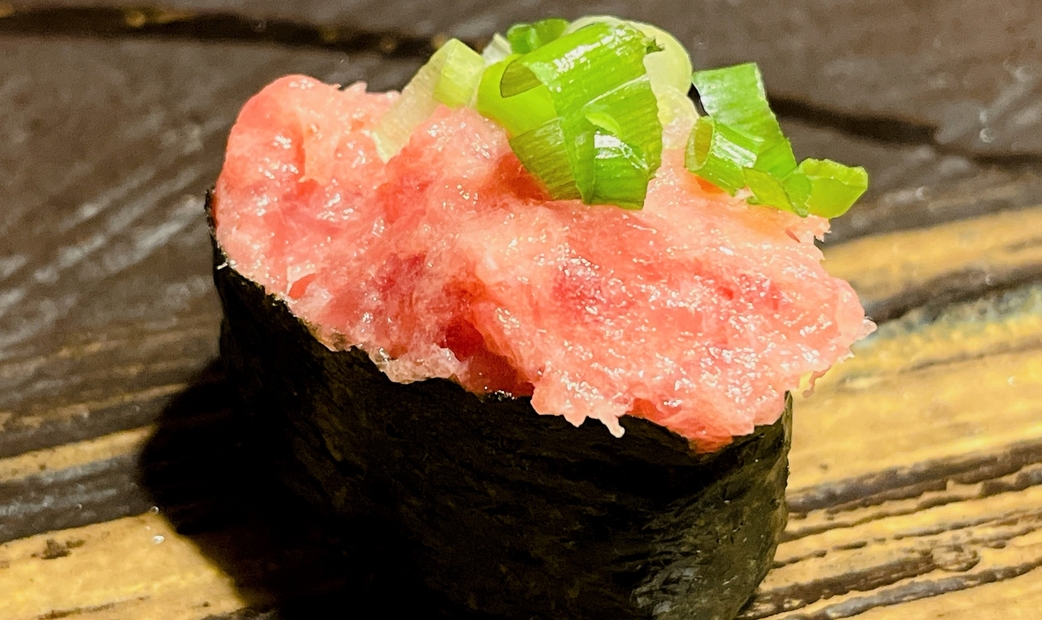.jpg)
- Negitoro gunkan: A battleship sushi with a generous amount of negitoro on top of the rice.
- Negitoro maki: Hosomaki (thin rolls) for easy eating.
What is Kamatoro ?
Kamatoro refers to the fatty part of the tuna located near the "kama" (gill area). It is an extremely rare cut, with only a small amount available from each tuna, making it a super-premium ingredient. Only a limited number of sushi restaurants offer it.
The characteristics of Kamatoro
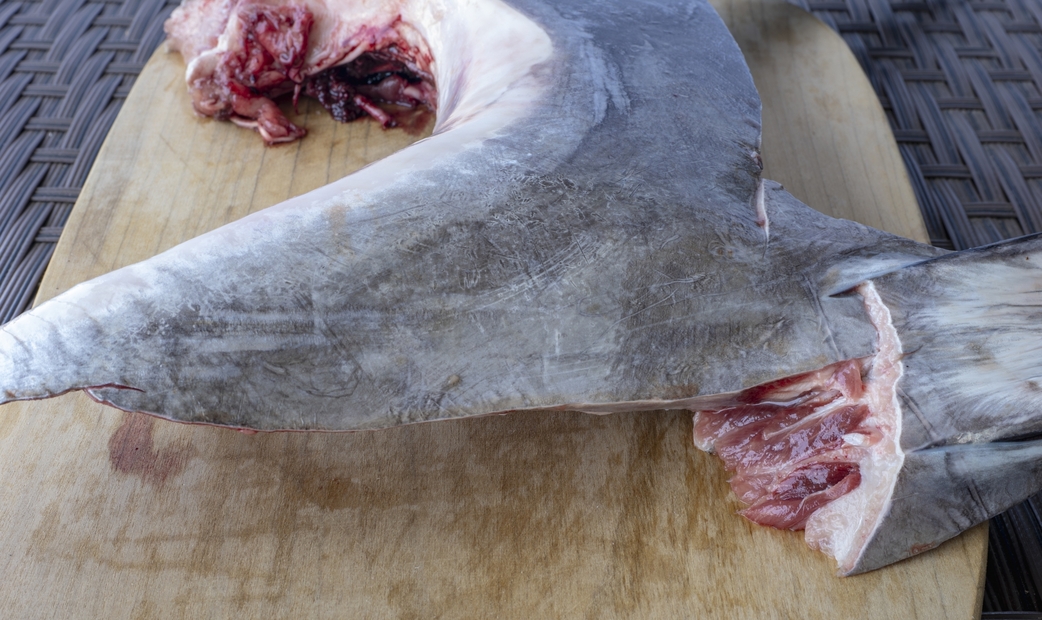
- Marbled with fat, making it incredibly tender.
- Even richer and sweeter than otoro.
- The fat melts and spreads in your mouth as you eat it.
How to Enjoy kamatoro Sushi
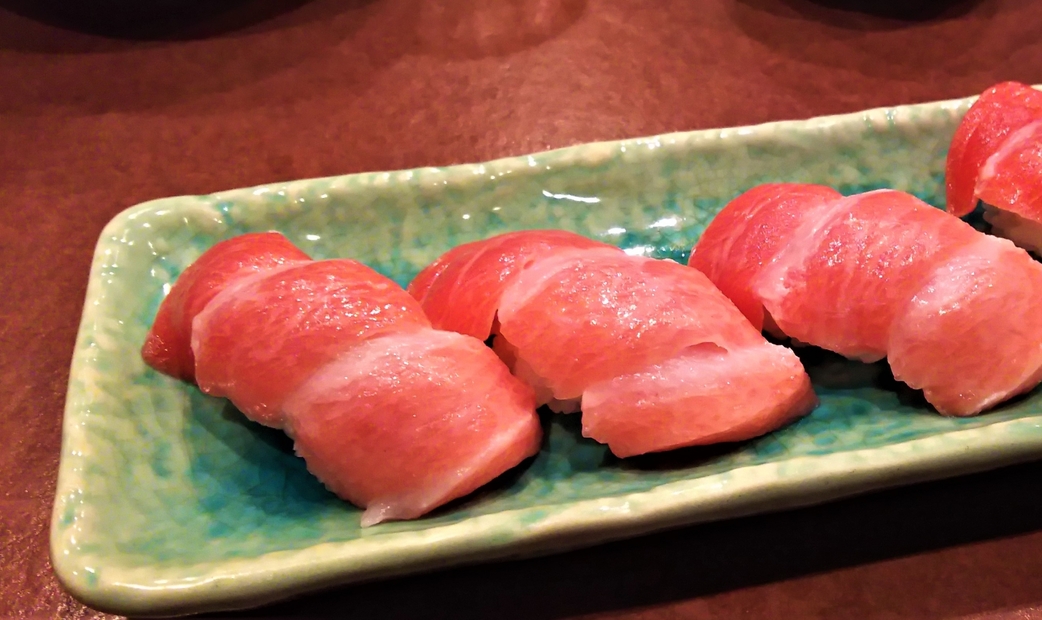
- Nigiri as it is (to enjoy the rare taste simply)
- Seared Kamatoro (searing increases the sweetness of the fat)
What is Jukusei (Aging)?
Aging is a technique where tuna is stored under controlled temperature and humidity for a certain period to concentrate its umami. Aged tuna has a richer, more tender texture compared to fresh tuna, and the richness of the fat becomes more balanced. Typically, tuna is aged for 1 week to 1 month, but proper environmental control is crucial. This aging technique has gained attention in recent years and is increasingly offered at high-end sushi restaurants and specialty shops.
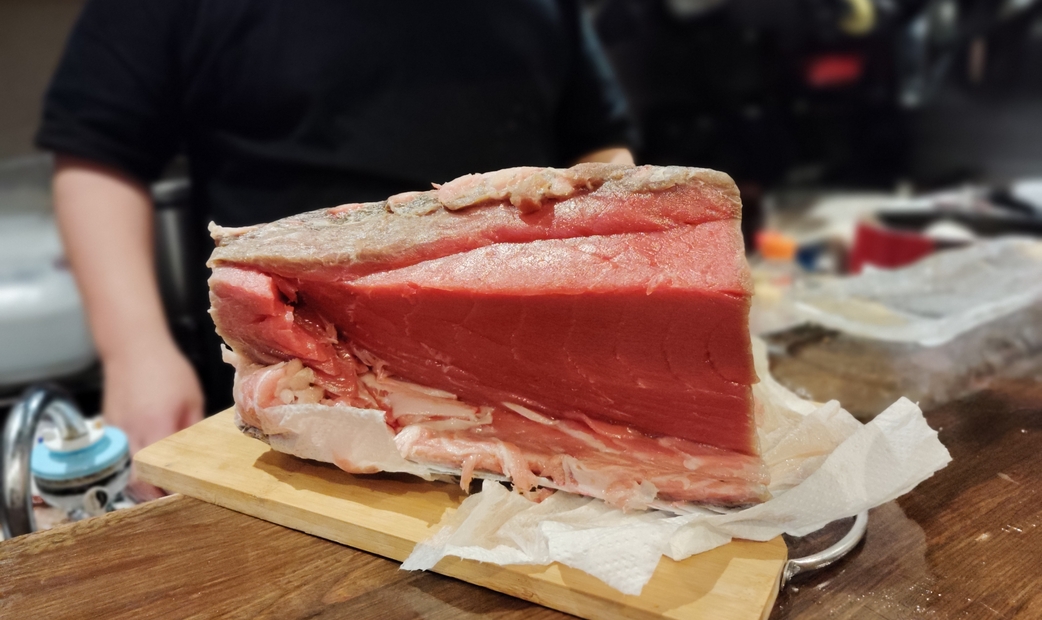
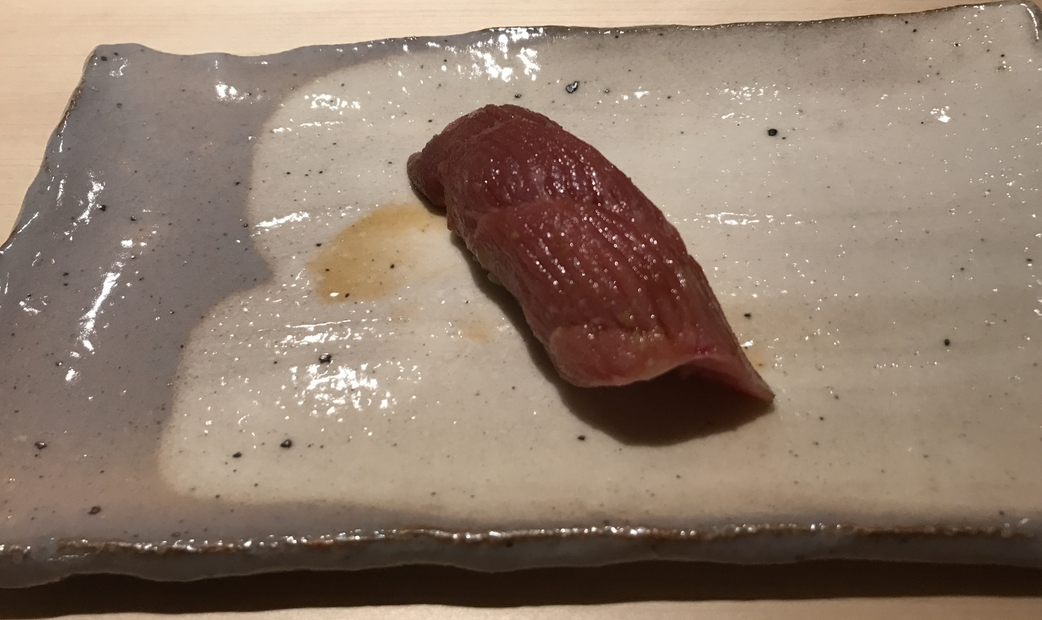
What is Zuke (Marinating)?
"Zuke" is a traditional Edomae-sushi technique where tuna is marinated in a soy sauce-based seasoning. In the Edo period, this method was used to enhance preservation, but today, it is mainly used to enjoy a unique change in flavor. Marinating the tuna adds richness, and the soy sauce imparts a distinct taste. This technique is particularly well-suited to lean tuna (akami).
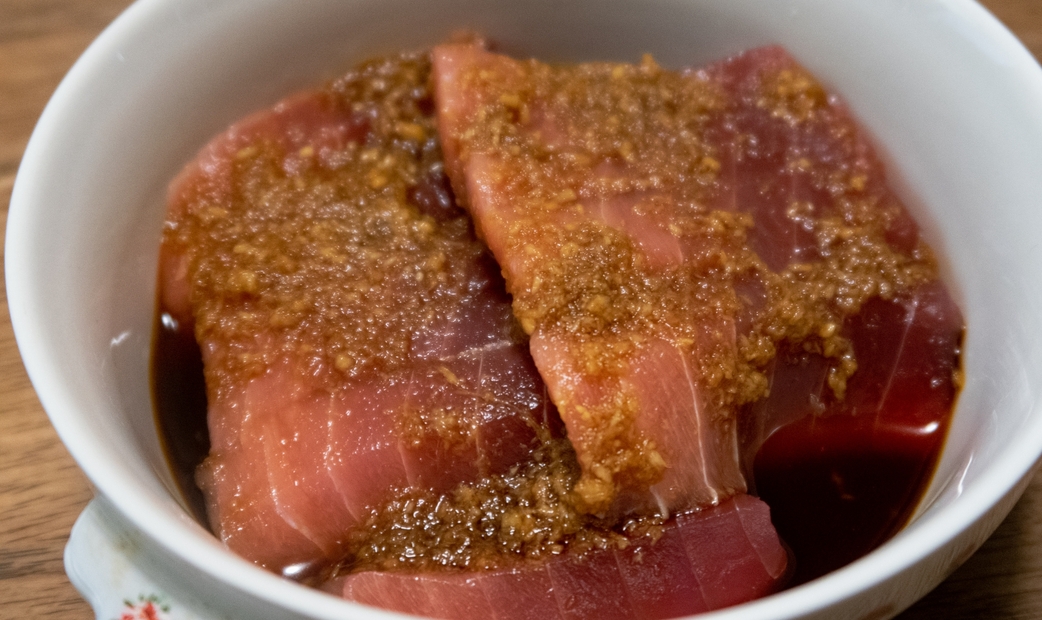
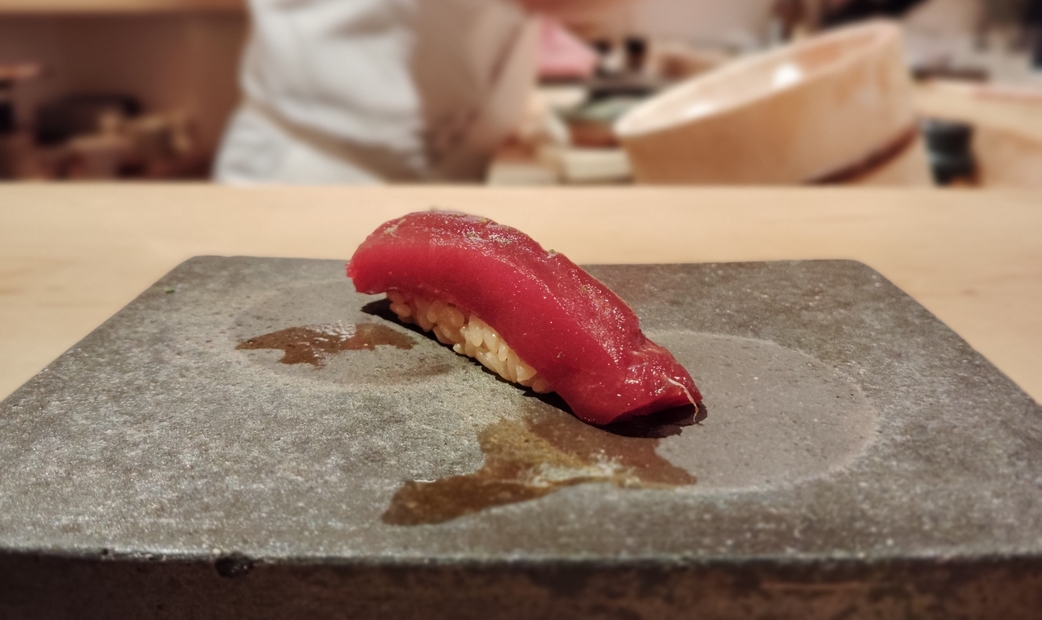
4 Best Sushi Restaurants in Tokyo for Delicious Tuna
Udatsu Sushi (宇田津 鮨)
A Michelin-listed restaurant with the concept of "Sushi and Art." Using specially prepared Shari and the highest quality ingredients, it offers Edomae-sushi in an artistic setting. One of its specialties is the "Smoked Otoro," served as a side dish. The restaurant carefully selects fatty tuna from various regions to ensure premium quality.
- Operation hours
- Lunch:
[Mon–Fri] From 12:00 PM
[Sat, Sun & Public Holidays] From 11:00 AM / From 1:00 PM
Dinner:
From 6:00 PM / From 9:00 PM - Address
- 2-48-10, Kamimeguro, Meguro-ku, Tokyo
- Nearest station
- Nakameguro Station
- Directions from station
- 5-10 minute's walk from Nakameguro Station
- Payment methods
- Cash, Credit card
- Seats
- 1F:9 Counter Seats, 1F 1 Private Room(2~4people)
2F:5 Counter Seats or 2F 1 Private Room(4~8people) - Awards
-
Michelin
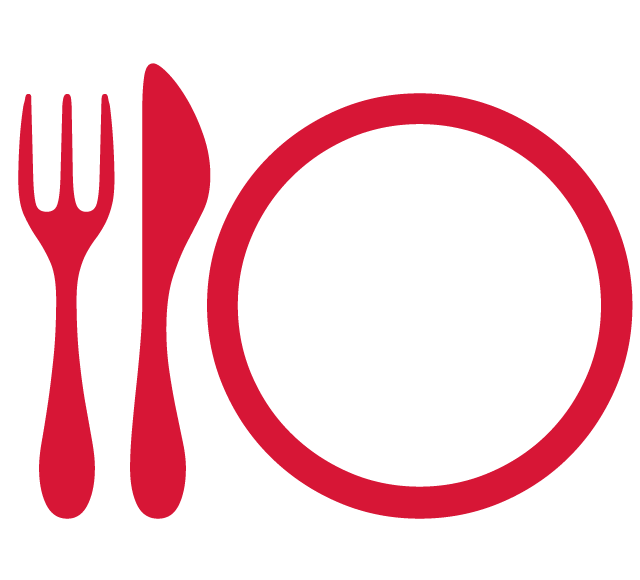
-
RF5.0Posted on :12/02/2025
-
Mateusz Kołodziejski5.0Posted on :12/02/2025
-
Mark Feygin5.0Posted on :11/30/2025
Sushi Masashi (鮨 将司)
A Michelin one-star restaurant run by a chef who trained at the Ritz-Carlton and "Sushi Wakon." The restaurant places a strong emphasis on tuna, offering three varieties: akami, chutoro, and otoro. Its signature dish, "Tuna Sukiyaki," is a must-try. The tuna is sourced from the renowned wholesaler Yamayuki.
- Operation hours
- Lunch: 12:00 PM -
Dinner: 5:30 PM - 8:00 PM - Regular holiday
- Wednesdays, Sundays, Public Holidays (Others, Irregular Holidays)
- Price range
-
Lunch: USD 272.52 - USD 311.45
Dinner: USD 272.52 - USD 311.45 - Address
- 7F, Gaien Icho no Mori, 2-9-9 Kita-Aoyama, Minato-ku, Tokyo
- Nearest station
- Gaienmae Station
- Directions from station
- 3 minutes walk from Gaienmae Station
- Payment methods
- Credit card available
- Seats
- Counter 10 Seats
Room 4 Seats - Awards
-
Michelin
-
Davide4.8Posted on :11/12/2025
-
Noah5.0Posted on :11/06/2025
-
Gook Chackis5.0Posted on :10/28/2025
Sushi Kakizaki (すし柿崎)
A hidden Edomae-sushi restaurant in Ningyocho, run by a chef with experience in the sushi departments of luxury hotels. The omakase course features three varieties of domestic, wild-caught tuna: otoro, chutoro, and akami. It also includes a comparison of bafun uni (green sea urchin) and murasaki uni (purple sea urchin).
- Operation hours
- 5:30 PM - 10:00 PM (L.O.)
- Regular holiday
- Sundays, Public Holidays
- Price range
- Dinner: USD 155.73 - USD 155.73
- Address
- Yutaka Building 1F, 2-8-11 Nihonbashi Ningyocho, Chuo-ku, Tokyo
- Nearest station
- Ningyocho Station
- Directions from station
- 3 minutes walk from Ningyocho Station
- Payment methods
- Cash, Credit card
- Seats
- 8 Seats
-
Tim Dahnke5.0Posted on :05/27/2025
-
G.M.5.0Posted on :03/04/2024
Jukusei Sushi Yorozu (熟成鮨 万)
A Michelin one-star restaurant that offers aged sushi toppings. The course begins with chutoro that has been aged for 25 days, followed by rich akami and then sweet toro. While other toppings are also star-worthy, the owner loves tuna so much that it’s served as the first piece. The tuna is sourced from the renowned wholesaler Yamayuki.
- Operation hours
- 05:00 PM – 08:00 PM, 08:30 PM – 11:30 PM
- Regular holiday
- Sundays
- Price range
- Dinner: USD 272.52 - USD 272.52
- Address
- 301 Va Building, 4-6-5, Higashi, Shibuya-ku, Tokyo
- Nearest station
- HIroo Station, Ebisu Station, Shibuya Station
- Directions from station
- 20 minutes walk from each nearest station.
5-6 minutes by cab from the nearest stations. - Payment methods
- Cash, Credit card available
- Seats
- 6 Seats


